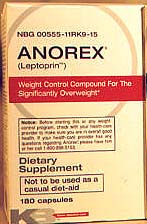"Morbid obesity" refers to
patients who are 50-100%, or 100 pounds over their ideal body weight. A BMI value greater than 39 may be used as well to diagnose morbid obesity. Medical problems commonly resulting from untreated morbid obesity include:
 --Diabetes
--Diabetes
 --Hypertension
--Hypertension
 --Heart Disease
--Heart Disease
 --Stroke
--Stroke
 --Depression , and
--Depression , and
 --Osteoarthritis
--Osteoarthritis
 --Certain cancers, including breast and colon
--Certain cancers, including breast and colon
 In extreme cases, especially when medical treatment is not sought, some of these can lead to right-sided heart failure and ultimately death.
In extreme cases, especially when medical treatment is not sought, some of these can lead to right-sided heart failure and ultimately death.
 Something every parent should keep in mind is that obesity in children has become epidemic in the U.S. The American Heart Association reports that close to five million children between 7 and 18 are considered overweight and obese. Much of obesity in children is attributed to television and computers, which keep kids sedentary rather than active. Add to that the availability of fast food, and it's easy to see how children can put on extra unhealthy weight. Obesity in children can jeopardize a child’s self-esteem in a society obsessed with being thin, but more importantly, it also poses potentially serious health risks for the child. Formerly considered adult diseases, high blood pressure, type II diabetes, and even early signs of artherosclerosis are being diagnosed in children.
Something every parent should keep in mind is that obesity in children has become epidemic in the U.S. The American Heart Association reports that close to five million children between 7 and 18 are considered overweight and obese. Much of obesity in children is attributed to television and computers, which keep kids sedentary rather than active. Add to that the availability of fast food, and it's easy to see how children can put on extra unhealthy weight. Obesity in children can jeopardize a child’s self-esteem in a society obsessed with being thin, but more importantly, it also poses potentially serious health risks for the child. Formerly considered adult diseases, high blood pressure, type II diabetes, and even early signs of artherosclerosis are being diagnosed in children.
Helpful Links:
Obesity
besity is defined as an excessively high amount
of body fat (adipose tissue) relative to lean body mass. A person is considered obese if
he is more than 20% over his ideal weight. Obesity is the second leading cause of
preventable death, contributing to serious health problems such as cancer, heart disease
and stroke. There are a variety of ways to measure body fat distribution such as skinfold
measures, waist-to-hip circumference ratios, or techniques such as ultrasound, computed
tomography, or magnetic resonance imaging. Body Mass Index (BMI) is a common measure
technique which gives the ratio of weight-to-height. It is a mathematical formula in
which a person's body weight in kilograms is divided by the square of his or her height
in meters. Some believe that those with a BMI of 25 to 29.9 are considered overweight,
while individuals with a BMI of 30 or more are considered obese.
 Additionally, there are a number of treatments available for obesity, including cutting
calories, starting an exercise program, using healthy stress management techniques and
getting supportive counseling. Medications are available if necessary. In severe cases,
surgeries such as gastric stapling or gastric bypass may be necessary. If surgery isn't
the route for you, may we suggest an alternative preventative treatment...
Anorex. Anorex is a weight loss
supplement that helps the user lose weight by increasing metabolic functions, aiding in
the burning of calories, providing high protein and restricted carbs, and suppressing the
appetite. Ketozyne, our protein beverage, together with Anorex, uses natural ingredients
to help the body achieve rapid weight loss.
Additionally, there are a number of treatments available for obesity, including cutting
calories, starting an exercise program, using healthy stress management techniques and
getting supportive counseling. Medications are available if necessary. In severe cases,
surgeries such as gastric stapling or gastric bypass may be necessary. If surgery isn't
the route for you, may we suggest an alternative preventative treatment...
Anorex. Anorex is a weight loss
supplement that helps the user lose weight by increasing metabolic functions, aiding in
the burning of calories, providing high protein and restricted carbs, and suppressing the
appetite. Ketozyne, our protein beverage, together with Anorex, uses natural ingredients
to help the body achieve rapid weight loss.
 Note:
This information is provided for educational purposes only and is not
intended to replace the use of a qualified health care professional. We
strongly recommend the use of a physician for the diagnostic phase of any
treatment. With an accurate diagnosis in hand, we believe the consumer, at
that point, has a basic, unalienable right to seek out factual information
on all therapeutic approaches, both orthodox and alternative, and choose
those approach(es) that are right for them. Nonetheless, a "good doctor"
should be considered a requisite starting point.
Note:
This information is provided for educational purposes only and is not
intended to replace the use of a qualified health care professional. We
strongly recommend the use of a physician for the diagnostic phase of any
treatment. With an accurate diagnosis in hand, we believe the consumer, at
that point, has a basic, unalienable right to seek out factual information
on all therapeutic approaches, both orthodox and alternative, and choose
those approach(es) that are right for them. Nonetheless, a "good doctor"
should be considered a requisite starting point.

 To U.S.
Users: None of the products mentioned on this page have been evaluated
by the U.S. Food & Drug Administration; therefore, they are not
intended to diagnose, treat, cure, or prevent any disease.
To U.S.
Users: None of the products mentioned on this page have been evaluated
by the U.S. Food & Drug Administration; therefore, they are not
intended to diagnose, treat, cure, or prevent any disease.
